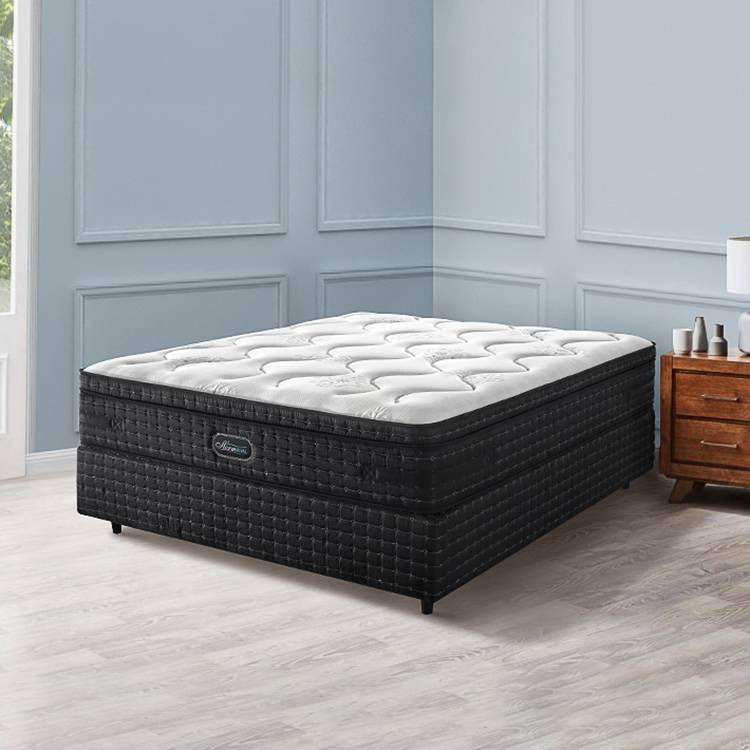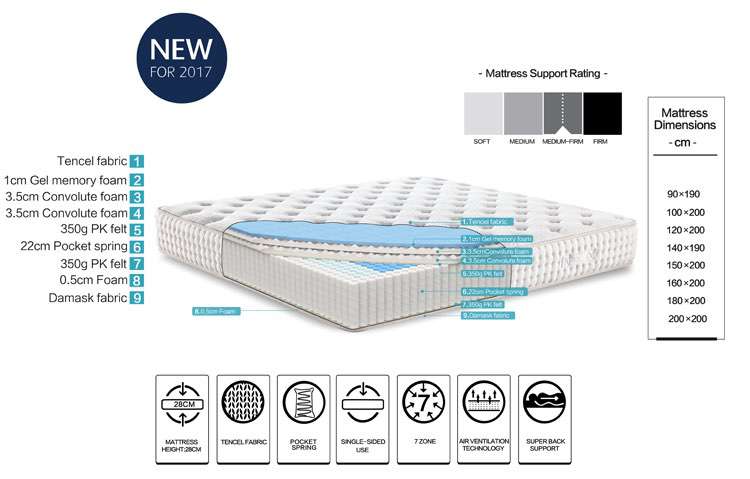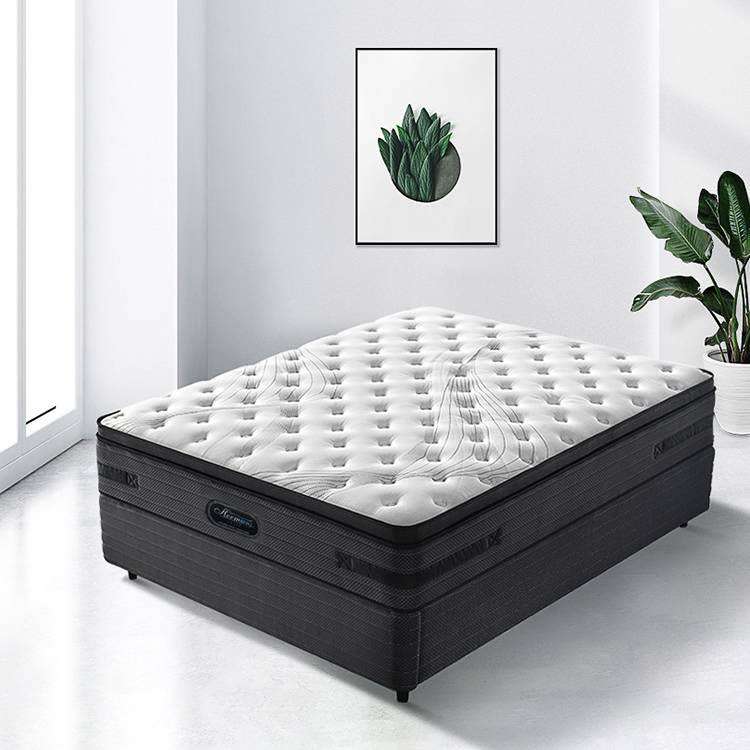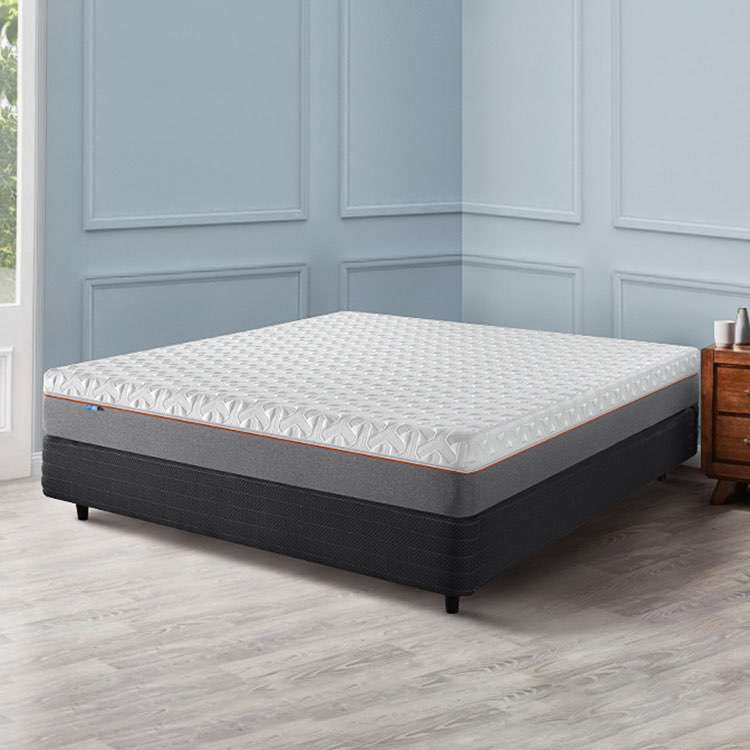Exploring Advanced Cooling Technologies in Modern Mattresses
 Foshan LEIZI Furniture Co., Ltd
Foshan LEIZI Furniture Co., Ltd  July 25,2024
July 25,2024
In the quest for a good night's sleep, temperature regulation plays a crucial role. Sweating profusely or feeling uncomfortably warm can disrupt sleep cycles, leading to restless nights and groggy mornings. Fortunately, advancements in mattress technology have led to the development of innovative cooling solutions designed to counteract these issues. In this article, we'll delve into the world of cooling technologies in modern mattresses, exploring how gel-infused foam, phase change materials (PCMs), breathable fabrics, and airflow systems are revolutionizing the way we sleep.
Understanding the Need for Cooling
Temperature directly impacts our sleep quality. The body's core temperature naturally decreases during sleep, reaching its lowest point in the early hours of the morning. However, external factors such as room temperature, bedding, and mattress materials can influence this process. When the body overheats, it can disrupt the natural progression of sleep cycles, leading to frequent awakenings and shallow sleep. This underscores the importance of maintaining a cool and comfortable sleep environment.
The Rise of Cooling Technologies
In recent years, there has been a surge in the development of cooling technologies aimed at addressing temperature regulation in mattresses. These innovations have transformed the way we think about sleep comfort, offering solutions for individuals who struggle with overheating during the night. Among the most notable advancements are gel-infused foam, phase change materials (PCMs), breathable fabrics, and airflow systems, each offering unique benefits in promoting cooler sleep.
Gel-Infused Foam
Gel-infused foam represents a breakthrough in mattress technology, offering a solution to the common issue of heat retention associated with traditional memory foam mattresses. This innovative material combines the pressure-relieving benefits of memory foam with the cooling properties of gel, resulting in a sleep surface that provides both comfort and temperature regulation. The gel beads or particles infused within the foam work to dissipate heat away from the body, preventing it from being trapped within the mattress and causing discomfort.
One of the key advantages of gel-infused foam is its ability to regulate temperature more effectively than traditional memory foam. As the sleeper's body heat is absorbed by the gel particles, they disperse the heat throughout the mattress, helping to maintain a cooler surface temperature. This proactive cooling mechanism is particularly beneficial for individuals who tend to sleep hot or experience night sweats, as it helps to mitigate the buildup of heat and moisture.
Furthermore, gel-infused foam mattresses often feature an open-cell structure, which enhances airflow and breathability. This allows air to circulate more freely through the mattress, promoting ventilation and heat dissipation. As a result, sleepers can enjoy a more comfortable and temperature-neutral sleep environment, conducive to uninterrupted restorative sleep.
Several leading mattress brands, including Sealy, Serta, and Tempur-Pedic, offer mattresses with gel-infused foam layers, catering to consumers seeking a cooler and more supportive sleep surface. Surely, LEIZI Furniture as a professional mattress manufacturer, we usually apply gel memory foam as our mattress material as well. Whether it's a traditional innerspring mattress with a gel-infused memory foam comfort layer or a modern all-foam mattress with multiple layers of gel-infused foam, these products provide a compelling solution for those prioritizing both comfort and temperature regulation in their mattress selection.
In summary, gel-infused foam mattresses represent a significant advancement in sleep technology, offering a balance of pressure relief, support, and temperature regulation. By incorporating gel-infused foam layers into their designs, mattress manufacturers are providing consumers with a solution to the age-old problem of overheating during sleep, ensuring a more comfortable and restful night's sleep for all.

Phase Change Materials (PCMs)
Phase change materials (PCMs) represent another innovative approach to temperature regulation in mattresses. These materials are engineered to absorb and release heat as they change from solid to liquid and vice versa. By actively regulating temperature fluctuations, PCMs help maintain a consistent and comfortable sleep environment. Mattresses infused with PCM technology offer sleepers a more balanced and thermally neutral experience, ensuring optimal comfort regardless of external conditions.
Breathable Fabrics
Breathable fabrics play a crucial role in enhancing airflow and moisture management within mattresses, contributing to a cooler and more comfortable sleep experience. Fabrics such as bamboo-derived rayon and Tencel (lyocell) are highly regarded for their natural breathability and moisture-wicking properties. Bamboo-derived rayon, known for its softness and breathability, allows air to circulate freely through the mattress, preventing the buildup of heat and humidity that can lead to discomfort during sleep. Additionally, bamboo fabric possesses inherent moisture-wicking abilities, efficiently drawing moisture away from the body and promoting a drier sleep environment. Similarly, Tencel, a sustainable fabric made from eucalyptus wood pulp, boasts exceptional moisture management properties, effectively absorbing and dissipating excess moisture to keep sleepers cool and dry throughout the night. Mattresses crafted with these breathable fabrics offer sleepers the dual benefits of enhanced airflow and moisture control, creating a conducive sleep environment conducive to uninterrupted rest. Leading mattress brands like Saatva and Avocado prioritize the use of natural, breathable materials in their mattress designs, catering to consumers seeking a cooler and more eco-friendly sleep solution.
Airflow Systems
Innovative airflow systems integrated into mattress designs further contribute to temperature regulation by enhancing ventilation and heat dissipation. These systems typically consist of strategically placed ventilation channels, convoluted foam layers, or perforated components designed to promote airflow throughout the mattress structure. By facilitating the movement of air, these features help dissipate excess heat generated by the sleeper's body, thereby maintaining a comfortable sleep surface temperature. Ventilation channels, often embedded within mattress cores or support layers, allow air to circulate freely, preventing heat buildup and promoting a cooler sleeping environment. Convoluted foam layers, characterized by their egg crate-like surface texture, increase surface area and airflow within the mattress, facilitating efficient heat dissipation. Perforated components, such as foam or latex layers with evenly spaced holes, promote airflow while providing targeted support and pressure relief. Mattresses equipped with advanced airflow systems offer sleepers an effective solution for combating heat retention and ensuring optimal temperature regulation throughout the night. Brands like Purple and GhostBed incorporate innovative airflow technologies into their mattress designs, prioritizing breathability and comfort for a restful night's sleep.
Consumer Benefits and Considerations
The incorporation of cooling technologies in modern mattresses offers numerous benefits for consumers. Not only do these innovations help alleviate common sleep disturbances associated with overheating, but they also contribute to overall sleep quality and comfort. However, it's essential for consumers to consider their individual preferences and needs when selecting a cooling mattress. Factors such as mattress firmness, preferred sleep position, and personal comfort preferences should all be taken into account to ensure the best possible sleep experience.
Future Trends and Innovations
As technology continues to advance, we can expect to see further innovations in cooling mattress technology. Manufacturers are constantly exploring new materials, construction techniques, and design features to push the boundaries of sleep comfort. Future trends may include the integration of smart sensors and temperature-regulating technologies that adapt to individual sleep patterns and preferences. Additionally, advancements in sustainable materials and eco-friendly manufacturing processes are likely to shape the future of cooling mattresses, aligning with growing consumer demand for environmentally conscious products.
In conclusion, the evolution of cooling technologies in modern mattresses represents a significant milestone in the quest for better sleep. From gel-infused foam to phase change materials and breathable fabrics, these innovations offer tangible solutions for individuals seeking relief from nighttime overheating and discomfort. By prioritizing temperature regulation and sleep quality, manufacturers are revolutionizing the way we approach sleep comfort, paving the way for a cooler, more restful night's sleep for all. As consumers continue to prioritize sleep health and comfort, the future of cooling mattresses looks brighter than ever, promising continued advancements and innovations in the pursuit of the perfect night's sleep.














